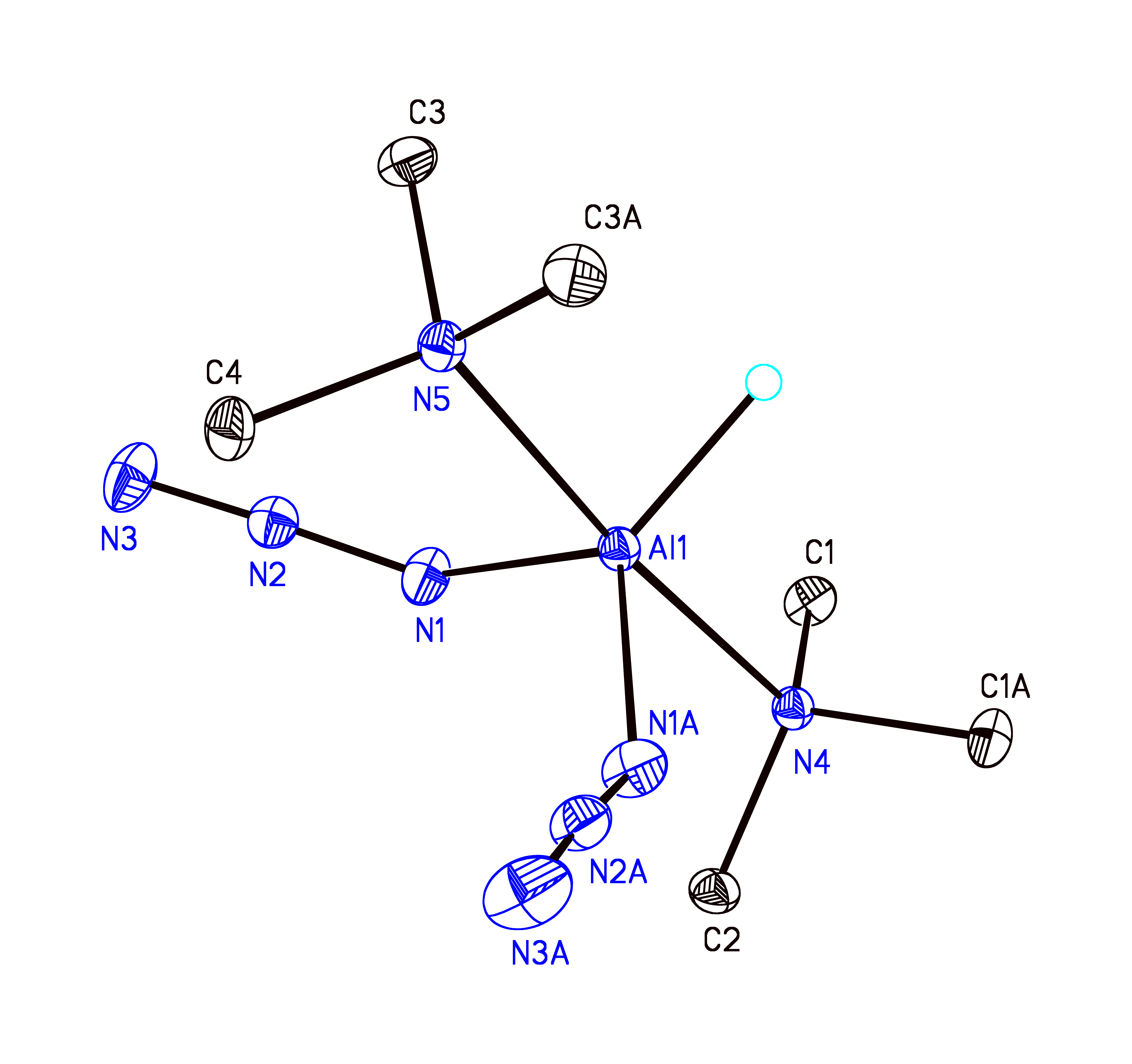
ACS PRF | ACS
All e-Annual Reports

38443-AC5
Investigation of Low Temperature Routes to Nitride and Oxide Materials
During the past year work on this project in our laboratory has focused on the generation of alumoxanes (ArOAlO)n and a preliminary screening of various nitrogen sources for nitride formation. The majority of the work was performed by two talented undergraduate (sophomore) students.
Originally, it was attempted to generate compounds such as ArOAl(H)OSiHMe2 and to study their decomposition to alumoxanes (ArOAlO)n and concomitant H2SiMe2 as a model system for the reaction of H3AlŠNMe3 with (Me2HSi)2O which affords aluminumoxyhydride HAlO. Since these attempts led to inseparable mixtures and eventually the disiloxy substituted species 2,6-t-Bu2-4-Me-C6H2OAl(OSiHMe2)2ŠNMe3, DMSO was investigated as an alternative oxygen donor. From the reactions of four different aryloxy aluminum hydrides with DMSO at low temperatures products could be isolated in two of the cases in low to moderate yields: The reaction of 2,6-t-Bu2-4-Me-C6H2OAlH2ŠNMe3 with 2 equiv DMSO in Et2O gave the trimeric alumoxane (2,6-t-Bu2-4-Me-C6H2OAlOŠOSMe2)3 as a crystalline solid which readily desolvates into a an amorphous powder. The structure was confirmed by a low-quality X-ray structure and 1H and 13C{1H} NMR spectroscopy. Recrystallization from benzene solution afforded a different compound which is believed to be the dimeric species (2,6-t-Bu2-4-Me-C6H2OAlOŠOSMe2)2 based on NMR spectroscopic and mass spectrometric results. Again, the crystals were subject to facile desolvation upon isolation, which prevented X-ray structure analysis to date. Similarly, the sterically encumbered aluminum hydride Dipp*OAlH2ŠNMe3 (Dipp* = 2,6-Dipp2C6H3-; Dipp = 2,6-i-Pr2C6H3-) reacted with DMSO to generate the dimer (Dipp*OAlOŠOSMe2)2 based on NMR data. It should also be mentioned that HAlO can be prepared using DMSO instead of (Me2HSi)2O. While the DMSO reaction is significantly faster, the resulting product is less clean and possesses a lower hydride activity.
The use of biguanide to prepare acac-like complexes Al{HN=C(NH2)NC(NH2)=NH}3 showed some initial promises, but this part of the project was hampered by unexpected difficulties in the synthesis of biguanide in our hands. Application of the commercially available dicyandiamide H2NC(=NH)NHCN as a ligand has not yet led to a defined product. On the other hand, we have been successful in the isolation of a stable aluminum azide hydride HAl(N3)2Š2NMe3 from the reaction of H3AlŠNMe3 with Me3SiN3. Its structure consists of a penta-coordinated aluminum with the anionic ligands in the equatorial positions. The colorless crystalline solid melts without decomposition at 47 įC. Smooth gas evolution commences thereafter, and a color change to brown occurred at 240 įC.
